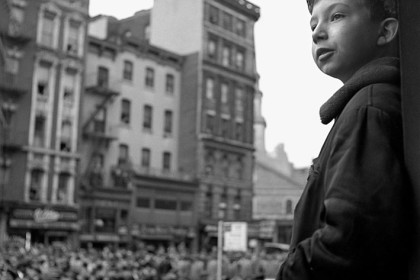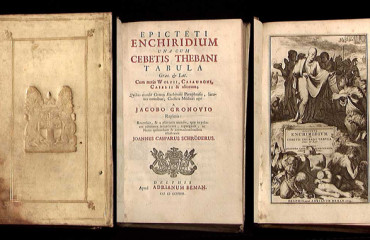
Vivian Maier was born in 1926 and died in Chicago in 2009. She was 83. The photos this woman took during her life have been displayed to public for the first time in 2010: one year after her death.
What a story Mrs Maier’s one; when I read it for the first time I could hardly believe it: the discovery of a refined “street photographer” of the second half of the Twentieth century, casually happened just after her death thank to John Maloof – still possessor and curator of almost all the photographer work – that bought to an auction for four hundred dollars a “storage box” full of boxes containing thousand of negatives and films, many yet to be developed, circumstance discovered only after, since during the auction he couldn’t control the content.
Even if she was born in the United States, Mrs Maier spent most of her youth in Europe; mostly in France, mother country of her father. Her first images date back to 1949 and are taken in the French Alps, mainly landscapes, and different portraits with very controlled frames, that show already the big influence of Jeanne Bertrand, very good and appreciated Chicago photographer who lived in Maiers’ house since 30’s.
In 1951 Vivian came back to New York and found a job as nanny and caretaker – activity that she will carry on until half 70’s – among the upper middle class of the city; in the spare time she took photos around the city, continuing to use the old and spartan Kodak Brownie. The year 1952 marks a turn in the way she looks the world, and following the path traced by great photographers of the time Mrs Maier invests a considerable amount of money in a “flaming” Rolleiflex. The flexibility of the new “camera” offers to the artist the possibility to examine deeper that world that surrounded her, daily represented first in New York city streets and then in Chicago.
She moved to Chicago, always working as a caretaker, and succeeded in renting a flat with a bathroom where, obviously, she placed her first dark room. It was the 1956. Around the half of the 60’s, she began to work among other families and stopped to develop rolls, that began to accumulate; in the meantime she had passed to the colour of the Kodachrome and to Leica.
The use of the coloured film gave to Maier’s photographs an outline new and unexpected: people started step by step to come out from the frames; in a nearly compulsive way, daily objects appear: mailboxes, graffiti, cars, hydrants, even objects picked up in the garbage bins. Maybe a different language to tell the impermanence of the human being above things.
I would stop here, the rest would just be the record of a life that goes off in total poverty.
foto: Vivian Maier_ ©2013 Maloof Collection Ltd. – All rights reserved
 English
English  Italiano
Italiano 



